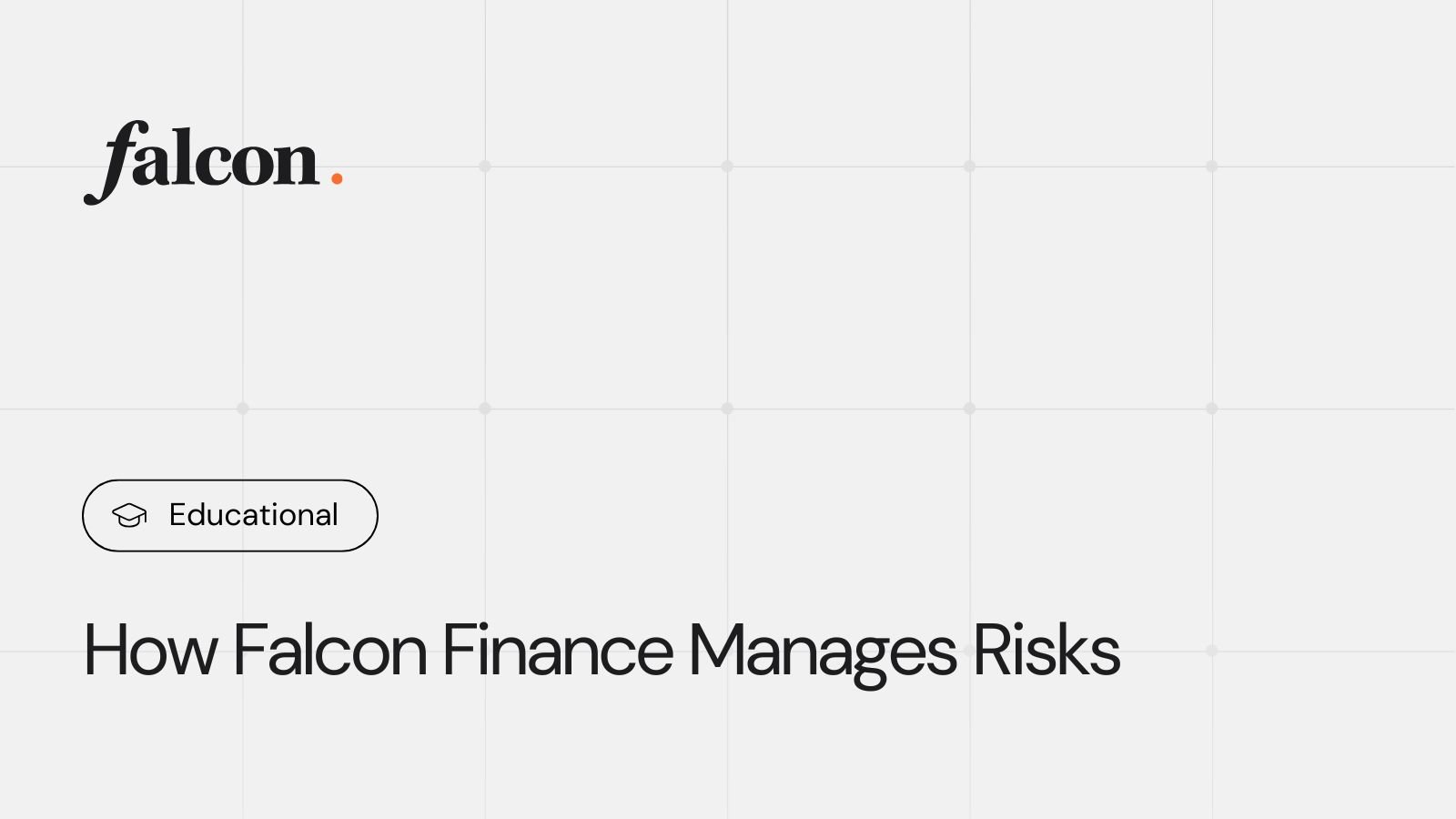How Falcon Finance Manages Risks
Updated • 15 Aug 2025
Published • 31 May 2025
4 mins

Cryptocurrencies and Web3 unlock earning opportunities that don’t exist in traditional finance. However, with innovation comes risk. In crypto, those risks often stem from both technology and human behavior, from smart contract vulnerabilities to mismanaged treasuries and volatile markets.
Falcon Finance is a synthetic dollar protocol built with a strong focus on security and reliability. Its risk management framework combines transparency, secure infrastructure, and third-party verification to protect users and support long-term resilience.
Falcon addresses risk across four key areas: governance and custody, capital stability, yield sustainability, and protocol integrity.
Governance and Custody Risk: Removing Single Points of Failure
Some of the most damaging incidents in crypto didn’t come from code exploits, but from poor access control and centralized decision-making. Falcon Finance is designed to prevent these risks by ensuring that no single actor has unilateral control. To safeguard custody and governance:
- Transparency and independent attestations: Falcon’s public Transparency Dashboard displays daily collateral attestations and asset breakdowns, backed by third-party verification from HT Digital. This includes daily overcollateralization checks and quarterly reserve reports.
- Trusted custody partners: Protocol reserves are held with regulated custodians, including BitGo, Fireblocks, Ceffu, and ChainUp.
- Multisig access control: Key vault actions require approval from multiple signers, reducing the risk of compromise through any single admin.
Capital Stability Risk: Managing Volatility Across Assets
Falcon supports minting USDf with stablecoins and a broad selection of crypto assets, including BTC, ETH, SOL, and 20+ others. While this offers flexibility, it also introduces risk, which Falcon mitigates through a set of robust collateral safeguards.
- Overcollateralization: USDf is backed by a diversified pool of collateral that exceeds its face value. This includes a mix of stablecoins and major cryptocurrencies. More volatile assets require a higher collateralization ratio to offset price swings. The current ratio is publicly available on Falcon’s Transparency Dashboard.
- No debt or margin risk: Users minting USDf through Classic or Innovative Mint do not incur debt and are not subject to margin calls. In Innovative Mint, if collateral falls below the liquidation threshold, users forfeit only their deposited assets while keeping the USDf they minted.
- Insurance Fund: A portion of monthly protocol revenue is set aside in an insurance fund to absorb short-term market shocks.
Yield Sustainability Risk: Real Yield Without Shortcuts
Some yield-bearing stablecoins have collapsed after relying on unsustainable incentives like token emissions or constant user inflows. When those sources dried up, revenues disappeared. Falcon Finance avoids these pitfalls by using market-neutral, transparent strategies designed for long-term sustainability.
- Backed by real, market-neutral strategies: Falcon generates yield through diverse strategies, including funding rate arbitrage, cross-exchange price spreads, and altcoin staking.
- Transparent APY display: All current APY rates in both Classic Yield and Boosted Yield are visible directly on the app, giving users clarity into how much they’re earning.
Protocol Integrity Risk: Security from the Ground Up
Even the strongest economics can’t protect a protocol if the code is flawed. Falcon prioritizes battle-tested standards and independent reviews to ensure technical integrity. The protective measures include:
- ERC-4626 standard: Falcon’s vaults are built on the ERC-4626 tokenized vault standard, a widely adopted framework that defines how yield-bearing assets are structured and interacted with in DeFi. By adhering to this standard, Falcon ensures greater composability with other protocols, simplifies integration for developers, and minimizes the need for custom logic, therefore reducing the risk of bugs, exploits, and inconsistent behavior.
- Independent audits: Falcon’s smart contracts have been reviewed by professional and independent security audit firms Zellic (March 2025) and Pashov (February 2025).
- Third-party reserve oversight: HT Digital performs daily recalculations and validations of USDf’s collateral. In addition, Harris & Trotter LLP will conduct quarterly attestation reports under the ISAE 3000 assurance standard.
Final Thoughts: A Protocol Built for Long-Term Trust
Crypto risk can’t be eliminated, but it can be managed. Falcon Finance offers a full-stack risk framework that blends strong custody, conservative collateral design, real-yield strategies, and independent verification.
The result is a synthetic dollar protocol built with security, stability, and transparency at its core. Falcon sets a new benchmark for responsible onchain finance, serving both institutions and crypto-native users.